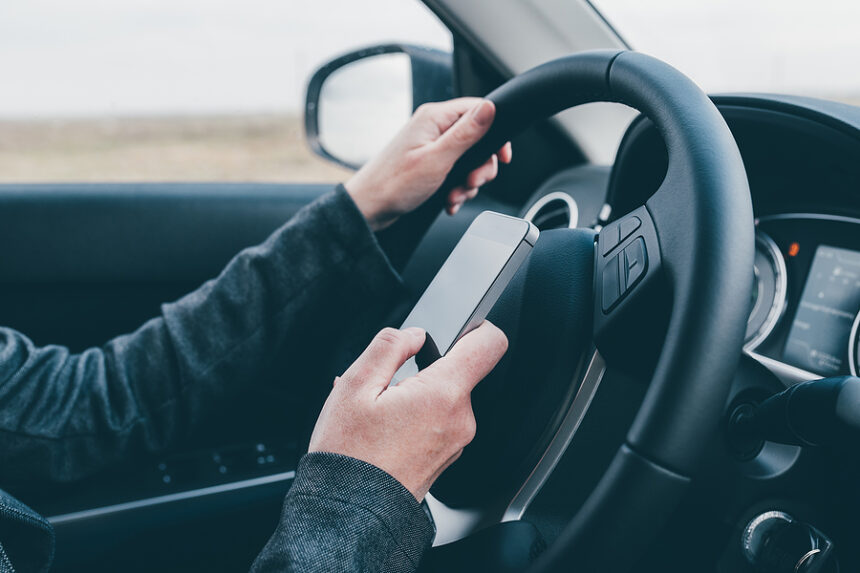In-car technology, including navigation systems and entertainment consoles, can also lead to distracted driving accidents in Minnesota. Minnesota distracted driving attorneys often work with victims of accidents caused by drivers interacting with these devices while on the road. Understanding how these distractions contribute to accidents is essential for raising awareness about safer technology use.
What Qualifies as Distracted Driving in Minnesota
Types of Distractions
In Minnesota, distracted driving encompasses many activities that divert a driver’s attention from the road. The state categorizes distractions into three main types: visual, manual, and cognitive. Visual distractions take your eyes off the road, manual distractions remove your hands from the wheel, and cognitive distractions take your mind off driving.
Common Examples
Some common examples of distracted driving in Minnesota include texting, talking on a cell phone, eating or drinking, adjusting the radio or navigation system, and interacting with passengers. It’s important to note that even hands-free devices can be considered a distraction if they significantly impair your focus on driving.
Legal Implications
Minnesota distracted driving attorneys often handle cases involving the state’s “No Texting” law. This law prohibits drivers from reading, composing, or sending electronic messages while the vehicle is in motion or part of traffic. This includes not only text messages but also emails and internet browsing. Violations can result in fines and potential criminal charges, especially if an accident occurs.
Beyond Cell Phones
While cell phone use is a primary concern, it’s crucial to understand that distracted driving isn’t limited to electronic devices. Under Minnesota law, any activity that takes your attention away from the task of safe driving can be considered a distraction.
The Rise of In-Car Technology in Vehicles
Advancements in Automotive Infotainment
The automotive industry has witnessed a significant surge in integrating advanced technology within vehicles in recent years. From touchscreen displays to voice-activated controls, these innovations aim to enhance the driving experience. However, this technological revolution has inadvertently contributed to the growing concern about distracted driving, particularly in Minnesota.
The Double-Edged Sword of Connectivity
While in-car technology offers convenience and connectivity, it presents new challenges for drivers. Features like hands-free calling, GPS navigation, and smartphone integration can divert attention from the road.
Balancing Innovation and Safety
As vehicles become more technologically advanced, it’s crucial to balance innovation and safety. Automakers are now focusing on developing systems that minimize driver distraction while still providing desired features. This includes improved voice recognition, simplified interfaces, and driver monitoring systems.
The Role of Education and Legislation
Both education and legislation play vital roles in addressing the rising concerns. Minnesota has implemented laws to combat distracted driving, but keeping pace with rapidly evolving technology remains challenging. Ongoing public awareness campaigns and driver education programs are essential in promoting responsible use of in-car technology.
How In-Car Technology Can Lead to Distracted Driving
In-car technology has revolutionized the driving experience but can also contribute significantly to distracted driving. As Minnesota distracted driving attorneys often point out, these high-tech features can divert a driver’s attention from the road, leading to potentially dangerous situations.
Infotainment Systems
Modern vehicles come equipped with sophisticated infotainment systems that offer many features. While these systems enhance comfort and convenience, they can also be a major source of distraction. Adjusting the GPS, scrolling through music playlists, or changing climate settings can take your eyes and mind off the road for crucial seconds.
Smartphone Integration
Many cars now offer seamless smartphone integration, allowing drivers to access apps, messages directly, and calls through the vehicle’s interface. While this aims to reduce handheld phone use, it can still lead to cognitive distractions as drivers engage in notifications and conversations.
Advanced Driver Assistance Systems (ADAS)
Ironically, even safety features can contribute to distracted driving. ADAS, such as lane departure warnings or adaptive cruise control, may create a false sense of security, leading some drivers to pay less attention to their surroundings. It’s crucial to remember that these systems are aids, not replacements for attentive driving.
Final Thoughts
As you navigate the roads, it’s crucial to recognize the potential dangers posed by these technological advancements. While they offer convenience and connectivity, they also demand your attention, potentially compromising your focus on driving. Let’s work together to reduce distracted driving and ensure that technological progress enhances, rather than endangers, our driving experience in the North Star State.






